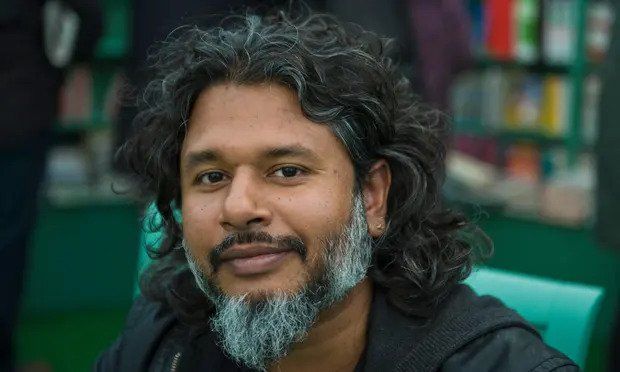Life after death in Sri Lanka
A photographer in the afterlife sets out to expose the carnage of Sri Lanka’s civil wars in Shehan Karunatilaka’s Booker-nominated novel 'The Seven Moons of Maali 'Almeida
By Tomiwa Owolade
Shehan Karunatilaka made a splash a decade ago with his debut novel Chinaman. Winner of the 2012 Commonwealth book prize and hailed as one of the great Sri Lankan novels, it recounts the alcohol-soaked life of a retired sports journalist who sets out on a zany quest to track down a great cricketer of the 1980s who has mysteriously gone missing.
His Booker-longlisted state-of-the-nation satire, The Seven Moons of Maali Almeida, returns to 1980s Sri Lanka, and similarly has a debauched protagonist. Maali, the son of a Sinhalese father and a burgher mother, is an itinerant photographer who loves his trusted Nikon camera; a gambler in high-stakes poker; a gay man and an atheist. And at the start of the novel, he wakes up dead.
He thinks he has swallowed “silly pills” given to him by a friend and is hallucinating. But no: he really is dead, and seemingly locked in an underworld. It’s no Miltonian pandemonium; for him, “the afterlife is a tax office and everyone wants their rebate”. Other souls surround him, with dismembered limbs and blood-stained clothes; and they are incapable of forming an orderly queue to get their forms filled in. Many of the people he meets in this bleakly quotidian landscape are victims of the violence that plagued Sri Lanka in the 80s, including a Tamil university lecturer who was gunned down for criticizing militant separatist group the Tamil Tigers. The novel also depicts the victims of Marxist group the Janatha Vimukthi Peramuna , or People’s Liberation party, who similarly waged an insurrection against the Sri Lankan government, and killed many leftwing and working-class civilians who got in their way.
Maali is a witness to the brutality of the insurrections in Sri Lanka. Working for newspapers and magazines, his ambition is to take photographs “that will bring down governments. Photos that could stop wars.” He has shot “the government minister who looked on while the savages of ’83 torched Tamil homes and slaughtered the occupants”, and taken “portraits of disappeared journalists and vanished activists, bound and gagged and dead in custody”.
Those photos are stored underneath a bed in his family home. Now, stuck in the underworld, he has only seven moons – one week – to get in contact with his friend Jaki and her cousin, persuade them to retrieve the stash of photos, and share them throughout Colombo, Sri Lanka’s largest city, in order to expose the profoundly violent nature of the conflict. It’s explained to Maali that “every soul is allowed seven moons to wander the In Between. To recall past lives. And then, to forget. They want you to forget. Because, when you forget, nothing changes.” Maali doesn’t want his contribution as a witness to be consigned to oblivion. His own death has viscerally exposed to him the fragility of life, and the photos constitute his legacy for his country and a defence against collective amnesia.
‘The Seven Moons of Maali Almeida’ is written in the second person, which gives the narrative a slightly distancing effect, but it’s compensated for by the sardonic humour. In one passage, the narrator muses: “You have one response for those who believe Colombo to be overcrowded: wait till you see it with ghosts.” Another asks: “Do animals get an afterlife? Or is their punishment to be reborn as human?” Another compelling feature is the vivid use of similes: one man’s battered body is described as having ribs caved in “like a broken coconut”.
The obvious literary comparisons are with the magical realism of Salman Rushdie and Gabriel García Márquez. But the novel also recalls the mordant wit and surrealism of Nikolai Gogol’s ‘Dead Souls’ or Mikhail Bulgakov’s ‘The Master and Margarita’. The scenarios are often absurd – dead bodies bicker with each other – but executed with a humour and pathos that ground the reader. Beneath the literary flourishes is a true and terrifying reality: the carnage of Sri Lanka’s civil wars. Karunatilaka has done artistic justice to a terrible period in his country’s history.
-theguardian.com



Comments are closed, but trackbacks and pingbacks are open.